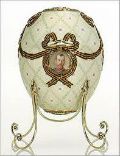Cross posted from The Stars Hollow Gazette
 Mardi Gras en français or Fat Tuesday in English, it is time to party. It’s the last day for some Christians to eat all the food they like and party before the season of fasting before Lent. In many traditions it isn’t just one day. Mardi Gras, or Carnival season, starts in January after 12th Night or the Epiphany, culminating at midnight on the day before Ash Wednesday. English traditions call the day Shrove Tuesday and for many religious Christians a time for confession. Celebrations vary from city to city and by country but many of the traditions are the same masks, beads, parades and parties. In Mobile, Alabama,the former capital of New France, the Mardi Gras social events start in November with “mystic society” balls on Thanksgiving and New Year’s Eve with more parades and balls in January and February ending on the traditional Tuesday before Lent. And you thought New Orleans and Rio de Janeiro were the party cities, heh. Many if these balls raise large amounts of money for charity, justifying in a way the “decadence”. In other places with a French heritage, like Louisiana, where the revelry also starts weeks before with parades and parties celebrating the arrival of the “Krewes” or organizations that sponsor various parades, the day is an official holiday. Like anyone in New Orleans is going to the office that day. There’s many traditional foods, too, like pancakes, fruit laden sweet breads and sugary pastries. Any food with lots of fat and eggs. Look out arteries here it comes.
Mardi Gras en français or Fat Tuesday in English, it is time to party. It’s the last day for some Christians to eat all the food they like and party before the season of fasting before Lent. In many traditions it isn’t just one day. Mardi Gras, or Carnival season, starts in January after 12th Night or the Epiphany, culminating at midnight on the day before Ash Wednesday. English traditions call the day Shrove Tuesday and for many religious Christians a time for confession. Celebrations vary from city to city and by country but many of the traditions are the same masks, beads, parades and parties. In Mobile, Alabama,the former capital of New France, the Mardi Gras social events start in November with “mystic society” balls on Thanksgiving and New Year’s Eve with more parades and balls in January and February ending on the traditional Tuesday before Lent. And you thought New Orleans and Rio de Janeiro were the party cities, heh. Many if these balls raise large amounts of money for charity, justifying in a way the “decadence”. In other places with a French heritage, like Louisiana, where the revelry also starts weeks before with parades and parties celebrating the arrival of the “Krewes” or organizations that sponsor various parades, the day is an official holiday. Like anyone in New Orleans is going to the office that day. There’s many traditional foods, too, like pancakes, fruit laden sweet breads and sugary pastries. Any food with lots of fat and eggs. Look out arteries here it comes.
A Little History
Mardi Gras was introduced to America in colonial days as a sedate religious tradition by Pierre Le Moyne d’Iberville and Jean-Baptiste Le Moyne de Bienville, in the late 17th century, when King Louis XIV sent the pair to defend France’s claim on the territory of Louisiane.
The expedition, led by Iberville, entered the mouth of the Mississippi River on the evening of March 2, 1699, Lundi Gras, not yet knowing it was the river explored and claimed for France by René-Robert Cavelier, Sieur de La Salle in 1683. The party proceeded upstream to a place on the west bank about 60 miles downriver from where New Orleans is today, where a small tributary emptied into the great river, and made camp. This was on March 3, 1699, Mardi Gras day, so in honor of this holiday, Iberville named the spot Point du Mardi Gras (French: “Mardi Gras Point”) and called the small tributary Bayou Mardi Gras. Bienville went on to found Mobile, Alabama in 1702 as the first capital of French Louisiana. In 1703 French settlers in that city began to celebrate the Mardi Gras tradition. By 1720, Biloxi was made capital of Louisiana. While it had French settlers, Mardi Gras and other customs were celebrated with more fanfare given its new status. In 1723, the capital of French Louisiana was moved to New Orleans, founded in 1718. With the growth of New Orleans as a city and the creolization of different cultures, the varied celebration of Mardi Gras became the event most strongly associated with the city. In more recent times, several U.S. cities without a French Catholic heritage have instituted the celebration of Mardi Gras, which sometimes emerged as grassroots movements.
In other countries Mardi Gras has different names. In Belgium’s city of Binche it is the most important day if the year:
 The carnival is the most known of several others that take place in Belgium at the same time and has been proclaimed as a Masterpiece of the Oral and Intangible Heritage of Humanity listed by UNESCO. Its history dates back to approximately the 14th century.
The carnival is the most known of several others that take place in Belgium at the same time and has been proclaimed as a Masterpiece of the Oral and Intangible Heritage of Humanity listed by UNESCO. Its history dates back to approximately the 14th century.
Events related to the carnival begin up to seven weeks prior to the primary celebrations. Street performances and public displays traditionally occur on the Sundays approaching Ash Wednesday, consisting of prescribed musical acts, dancing, and marching. Large numbers of Binche’s inhabitants spend the Sunday directly prior to Ash Wednesday in costume.
The centrepiece of the carnival’s proceedings are clown-like performers known as Gilles. Appearing, for the most part, on “Shrove” Tuesday, the Gilles are characterised by their vibrant dress, wax masks and wooden footwear. They number up to 1,000 at any given time, range in age from 3 to 60, and are customarily male. The honour of being a Gille at the carnival is something that is to be aspired to by local men. From dawn on the morning of the carnival’s final day, Gilles appear in the centre of Binche, to dance to the sound of drums and ward evil spirits away with sticks. Later, during the day, they don large hats adorned with ostrich plumes, which can cost upwards of $300 US dollars to rent, and march through the town with baskets of oranges. These oranges are thrown to, and sometimes at, members of the crowd gathered to view the procession. The vigour and longevity of the orange throwing event has in past caused damage to property – some residents choose to seal windows to prevent this.
In Germany, Switzerland and Austria, Mardi Gras is called Karneval, Fastnacht, or Fasching. Fastnacht means “Eve of the Beginning of the Fast”. One of the largest festivals is in Cologne, Germany:
 Traditionally, the “fifth season” (carnival season) is declared open at 11 minutes past 11 on the 11th of November. The Carnival spirit is then temporarily suspended during the Advent and Christmas period, and picks up again in earnest in the New Year. The time of merrymaking in the streets is officially declared open at downtown square Alter Markt on the Thursday before the beginning of Lent. Street carnival, a week-long street festival, also called “the crazy days”, takes place between the Fat Thursday (Weiberfastnacht) and ends on Ash Wednesday (Aschermittwoch). The highlight of the carnival is Rose Monday (Rosenmontag), two days before Ash Wednesday. All through these days, Cologne folks go out masqueraded. The typical greeting during the festival is Kölle Alaaf!, a Kölsch phrase which can be translated as “Cologne above all!”
Traditionally, the “fifth season” (carnival season) is declared open at 11 minutes past 11 on the 11th of November. The Carnival spirit is then temporarily suspended during the Advent and Christmas period, and picks up again in earnest in the New Year. The time of merrymaking in the streets is officially declared open at downtown square Alter Markt on the Thursday before the beginning of Lent. Street carnival, a week-long street festival, also called “the crazy days”, takes place between the Fat Thursday (Weiberfastnacht) and ends on Ash Wednesday (Aschermittwoch). The highlight of the carnival is Rose Monday (Rosenmontag), two days before Ash Wednesday. All through these days, Cologne folks go out masqueraded. The typical greeting during the festival is Kölle Alaaf!, a Kölsch phrase which can be translated as “Cologne above all!”
In Europe, some of the earliest Carnivales were in Italy. One of the most elegant and sumptuous is in the canal city if Venice:
 It is said that the Carnival of Venice was originated from a victory of the “Repubblica della Serenissima”, Venice previous name, against the Patriarch of Aquileia, Ulrico in the year 1162. In the honor of this victory, the people started to dance and make reunions in San Marco Square. Apparently this festival started on that period and become official in the renaissance. After a long absence, the carnival return to operate in 1979. the Italian government decided to bring back the history and culture of Venice, and sought to use the traditional Carnival as the centerpiece of their efforts. Today, approximately 3,000,000 visitors come to Venice each day for Carnivals. One of the most important events is the contest for the best mask, placed at the last weekend of the Carnival. A jury of international costume and fashion designers votes for “La Maschera piu bella”. [..]
It is said that the Carnival of Venice was originated from a victory of the “Repubblica della Serenissima”, Venice previous name, against the Patriarch of Aquileia, Ulrico in the year 1162. In the honor of this victory, the people started to dance and make reunions in San Marco Square. Apparently this festival started on that period and become official in the renaissance. After a long absence, the carnival return to operate in 1979. the Italian government decided to bring back the history and culture of Venice, and sought to use the traditional Carnival as the centerpiece of their efforts. Today, approximately 3,000,000 visitors come to Venice each day for Carnivals. One of the most important events is the contest for the best mask, placed at the last weekend of the Carnival. A jury of international costume and fashion designers votes for “La Maschera piu bella”. [..]
Venetian carnival masks
Masks have always been a central feature of the Venetian carnival; traditionally people were allowed to wear them between the festival of Santo Stefano (St. Stephen’s Day, December 26) and the start of the carnival season and midnight of Shrove Tuesday. They have always been around Venice. As masks were also allowed on Ascension and from October 5 to Christmas, people could spend a large proportion of the year in disguise. Maskmakers (mascherari) enjoyed a special position in society, with their own laws and their own guild.
Venetian masks can be made in leather or with the original glass technique. The original masks were rather simple in design,decoration, often had a symbolic, and practical function.[5] Nowadays, most of them are made with the application of gesso and gold leaf and are all hand-painted using natural feathers and gems to decorate.
I would be remiss if I didn’t include the Carnivals of Brazil:
Carnaval is the most famous holiday in Brazil and has become an event of huge proportions. Excepted the industries, malls and the carnival related workers, the country stops completely for almost a week and festivities are intense, day and night, mainly in coastal cities. The consumption of beer accounts for 80% of annual consumption[citation needed] and tourism receives 70% of annual visitors. The government distributes condoms and launches awareness campaigns at this time to prevent the spread of AIDS.
Each Brazilian has its own unique celebration, the most famous, of course, is the one in Rio de Janeiro:
 Modern Brazilian Carnival originated in Rio de Janeiro in 1641 when the city’s bourgeoisie, largely Portuguese, imported the practice of holding balls and masquerade parties from Paris. It originally mimicked the European form of the festival, later absorbing and creolizing elements derived from Native American and African cultures.
Modern Brazilian Carnival originated in Rio de Janeiro in 1641 when the city’s bourgeoisie, largely Portuguese, imported the practice of holding balls and masquerade parties from Paris. It originally mimicked the European form of the festival, later absorbing and creolizing elements derived from Native American and African cultures.
In the late 19th century, the cordões (literally “cords”, laces or strings in Portuguese) were introduced in Rio de Janeiro. These were pageant groups that paraded through city avenues performing on instruments and dancing. Today they are known as Blocos (blocks), consisting of a group of people who dress in costumes or special t-shirts with themes and/or logos. Blocos are generally associated with particular neighborhoods; they include both a percussion or music group and an entourage of revellers.
Block parades have become an expressive feature of Rio’s Carnival. Today, they number more than 100 and the groups increase each year. Blocos can be formed by small or large groups of revelers with a distinct title with an often funny pun. (Os blocos RJ, para os solteiros, são um lugar para conhecer e até beijar pessoas, or “The blocos in Rio de Janeiro, for the singles, are places to meet and even kiss people.”) They may also note their neighborhood or social status. Before the show, they gather in a square, then parade in sections of the city, often near the beach. Some blocos never leave one street and have a particular place, such as a bar, to attract viewers. Block parades start in January, and may last until the Sunday after Carnival.
There occur Blocos parades in nearly every neighborhood throughout the city and metropolitan areas, but the most famous are the ones in Copacabana, Ipanema, Leblon, Lagoa, Jardim Botânico, and in downtown Rio. Organizers often compose their own music themes that are added to the performance and singing of classic “marchinhas” and samba popular songs. “Cordão do bola preta” (“Polka Dot Bloco”), that goes through the heart of Rio’s historical center, and “Suvaco do Cristo” (Christ’s statue armpit, referring to the angle of the statue seen from the neighborhood), near the Botanical Garden, are some of the most famous groups. Monobloco has become so famous that it plays all year round at parties and small concerts.
Samba schools are very large groups of performers, financed by respected organizations (as well as illegal gambling groups), who work year round in preparation for Carnival. Samba Schools perform in the Sambadrome, which runs four entire nights. They are part of an official competition, divided into seven divisions, in which a single school is declared the winner, according to costume, flow, theme, and band music quality and performance. Some samba schools also hold street parties in their neighborhoods, through which they parade along with their followers.


 Decorating eggs has long been a tradition of Easter. They can be dyed or painted, glittered and stickered with symbols of the season. But the most fabulously decorated eggs of all are those of the
Decorating eggs has long been a tradition of Easter. They can be dyed or painted, glittered and stickered with symbols of the season. But the most fabulously decorated eggs of all are those of the 


 So now that you’ve finished
So now that you’ve finished  Spring officially sprang at 1:14 AM Eastern Daylight Time on Tuesday. Partially because this is a “Leap Year”, in some times zones the
Spring officially sprang at 1:14 AM Eastern Daylight Time on Tuesday. Partially because this is a “Leap Year”, in some times zones the 

 That was Frenchman Dujardin’ reaction to winning the Oscar over favorite American George Clooney. There were the expected winners, “The Artist” taking the top three awards for Best Picture, Best Director and Dujardin’s Best Actor, putting the movies total statue count at six. It was followed closely by “Hugo” with five. The win for Best Actress by Meryl Streep for her portrayal of British Prime Minister Margaret Thatcher in “The Iron Lady” was an upset for favored nominee, Viola Davis for her role in “The Help“. I’m sure Melissa Harris Perry is pleased, she hated “The Help.” You can find all the winners marked with an asterisk in last night’s
That was Frenchman Dujardin’ reaction to winning the Oscar over favorite American George Clooney. There were the expected winners, “The Artist” taking the top three awards for Best Picture, Best Director and Dujardin’s Best Actor, putting the movies total statue count at six. It was followed closely by “Hugo” with five. The win for Best Actress by Meryl Streep for her portrayal of British Prime Minister Margaret Thatcher in “The Iron Lady” was an upset for favored nominee, Viola Davis for her role in “The Help“. I’m sure Melissa Harris Perry is pleased, she hated “The Help.” You can find all the winners marked with an asterisk in last night’s 


 In perusing the internet for new treats that would be suitable for the event, I found a great piece in the New York Times that has the recipes for
In perusing the internet for new treats that would be suitable for the event, I found a great piece in the New York Times that has the recipes for 
 The carnival is the most known of several others that take place in Belgium at the same time and has been proclaimed as a
The carnival is the most known of several others that take place in Belgium at the same time and has been proclaimed as a  Traditionally, the “fifth season” (carnival season) is declared open at 11 minutes past 11 on the 11th of November. The Carnival spirit is then temporarily suspended during the Advent and Christmas period, and picks up again in earnest in the New Year. The time of merrymaking in the streets is officially declared open at downtown square Alter Markt on the Thursday before the beginning of Lent. Street carnival, a week-long street festival, also called “the crazy days”, takes place between the Fat Thursday (Weiberfastnacht) and ends on Ash Wednesday (Aschermittwoch). The highlight of the carnival is
Traditionally, the “fifth season” (carnival season) is declared open at 11 minutes past 11 on the 11th of November. The Carnival spirit is then temporarily suspended during the Advent and Christmas period, and picks up again in earnest in the New Year. The time of merrymaking in the streets is officially declared open at downtown square Alter Markt on the Thursday before the beginning of Lent. Street carnival, a week-long street festival, also called “the crazy days”, takes place between the Fat Thursday (Weiberfastnacht) and ends on Ash Wednesday (Aschermittwoch). The highlight of the carnival is  It is said that the Carnival of Venice was originated from a victory of the “Repubblica della Serenissima”, Venice previous name, against the Patriarch of Aquileia, Ulrico in the year 1162. In the honor of this victory, the people started to dance and make reunions in San Marco Square. Apparently this festival started on that period and become official in the renaissance. After a long absence, the carnival return to operate in 1979. the Italian government decided to bring back the history and culture of Venice, and sought to use the traditional Carnival as the centerpiece of their efforts. Today, approximately 3,000,000 visitors come to Venice each day for Carnivals. One of the most important events is the contest for the best mask, placed at the last weekend of the Carnival. A jury of international costume and fashion designers votes for “La Maschera piu bella”. [..]
It is said that the Carnival of Venice was originated from a victory of the “Repubblica della Serenissima”, Venice previous name, against the Patriarch of Aquileia, Ulrico in the year 1162. In the honor of this victory, the people started to dance and make reunions in San Marco Square. Apparently this festival started on that period and become official in the renaissance. After a long absence, the carnival return to operate in 1979. the Italian government decided to bring back the history and culture of Venice, and sought to use the traditional Carnival as the centerpiece of their efforts. Today, approximately 3,000,000 visitors come to Venice each day for Carnivals. One of the most important events is the contest for the best mask, placed at the last weekend of the Carnival. A jury of international costume and fashion designers votes for “La Maschera piu bella”. [..] Modern Brazilian Carnival originated in Rio de Janeiro in 1641 when the city’s bourgeoisie, largely Portuguese, imported the practice of holding balls and masquerade parties from Paris. It originally mimicked the European form of the festival, later absorbing and creolizing elements derived from Native American and African cultures.
Modern Brazilian Carnival originated in Rio de Janeiro in 1641 when the city’s bourgeoisie, largely Portuguese, imported the practice of holding balls and masquerade parties from Paris. It originally mimicked the European form of the festival, later absorbing and creolizing elements derived from Native American and African cultures. Mardi Gras, Carnivale, Shove Tuesday, Fat Tuesday, what ever you call the day before the Christian Lent, it’s all about food, fatty food. Eat, drink and be merry for at midnight you must fast and give up your favorite vice, except on Sunday, for the next forty days, that is if you’re a Christian. We Pagans just raise an eye brow and enjoy the party and the FOOD!
Mardi Gras, Carnivale, Shove Tuesday, Fat Tuesday, what ever you call the day before the Christian Lent, it’s all about food, fatty food. Eat, drink and be merry for at midnight you must fast and give up your favorite vice, except on Sunday, for the next forty days, that is if you’re a Christian. We Pagans just raise an eye brow and enjoy the party and the FOOD! 


